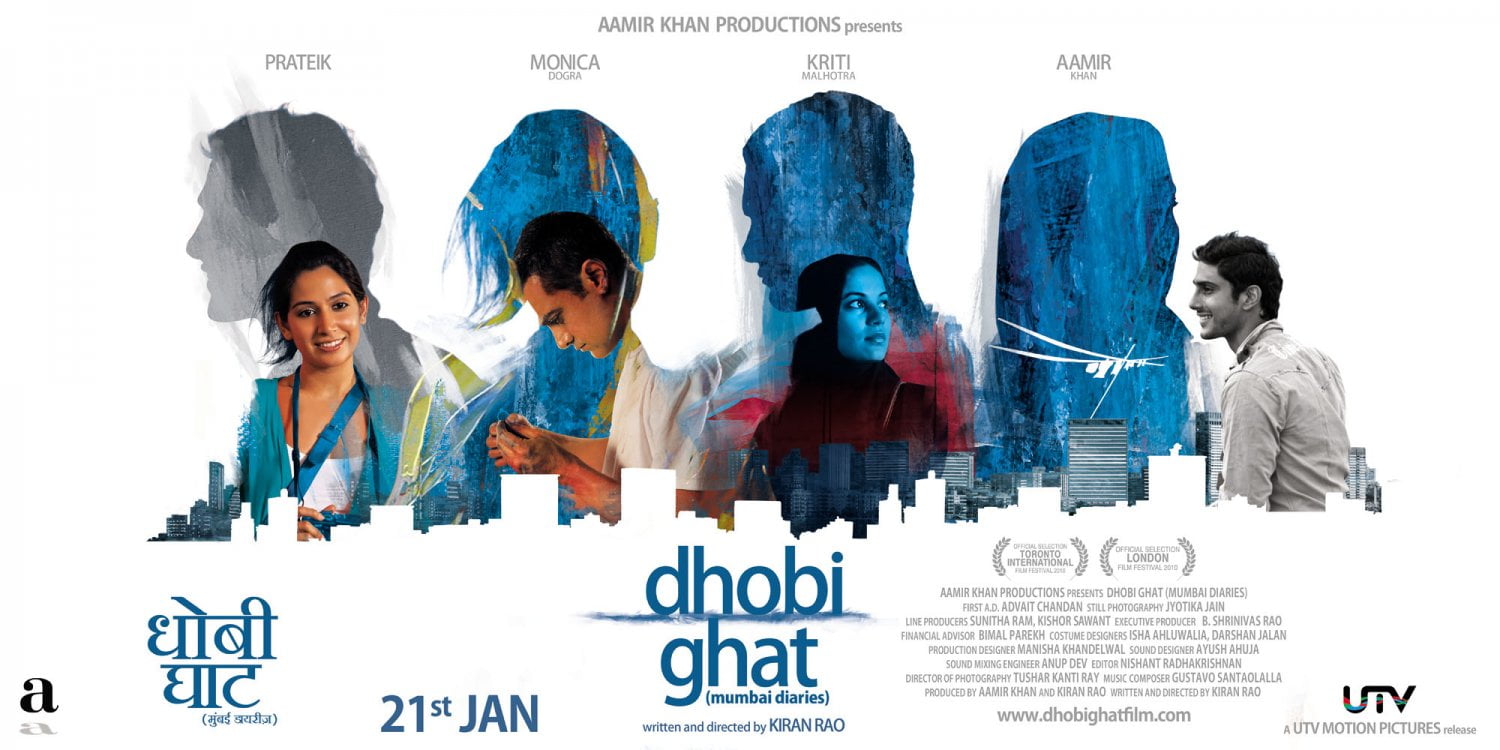Kiran Rao brews a nasty concoction of bitter-sweat realities and socio-economic problems, squeezes a little bit of artistic poignancy in it- et voila! You have Dhobi Ghat!
Dhobi Ghat, which translates to “The Washerman’s Corner,” or “laundry bay,” is a slow burn, (Bombay) aesthetic-laden, art film of sorts that puts the Bombay City’s culture under a microscope yet never threatens to crush its authenticity as we easily and often tend to do with little things that are viewed through a critical lens. Its success in realism lies somewhere in its accurate and raw projection of intersectionality and diversity of Mumbai – the two major features of the city that do the heavy lifting contributing to the city’s booming urbanisation and its skyrocketing development as the socio-economic capital of India.
Throughout the film, a safe distance is maintained between the viewers, the characters and the City. We are mere spectators, aliens even, who are vested with the power to analyse and construe this multi-dimensional, succulently-layered film however we want. Our compasses need not point North to be considered ‘accurate’, it can point wherever it wants, and there is no ‘right interpretation’ as such.
The beauty of this Dhobi Ghat stems from the multi-perspective and fertile ground it offers to be tilled by anyone, especially anybody from the plethora of humans who call Mumbai their home. NRIs like Shai to newcomers like Yasmin; renowned and whimsical painters like Arun to slum-dwelling dreamers like Munna — all are welcome; thus Mumbai becomes a fruit bowl identity of her own, a communal gift, a generous contribution by the thousands of citizens who all stack one tiny grain of their personalities to form a heap of vibrant harvest.
Dhobi Ghat (Mumbai Diaries) doesn’t try to catapult you into investing in its narratives. It doesn’t build any hopes. It doesn’t grapple to predict the unforeseeable, it compels you to live with it, just as life in the unpredictable City demands. It renders you and the characters fortuitous in all of our pursuits; you find yourself on your knees, surrendering to the City’s character that you have collaterally helped create.
Is the City the ultimate villain or is she a land of opportunities corrupted by humanity? Will Munna and Shai get together? Who knows? Will Arun ever meet Yasmin? Well, maybe not. Where is this film heading? I don’t know and maybe don’t even want to know. Not because it’s not gripping enough but because marinating in its City-flavored gravy, diverse and vivid, is what’s bringing me the real joy.
Examining the intersectionality effect of media and visuals in narrative
All four protagonists have a connection to a form of media and the visual, yet their means and access to media tell us about where they come from. Their ambitions which leak into their stories strive to find agency; an agency that can widen their doorway — the classic paradigm of the City. For Munna, a lowered class immigrant from the rural north, becoming an actor requires a good physique and superficial beauty; his portfolio becomes central to his career.
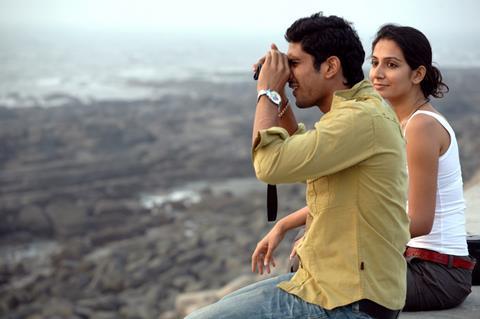
Arun, in contrast to Munna, comes from a more sophisticated fraction of Mumbai. Mumbai is not a land of poverty and struggles for him in the sense it is for Munna, it is “his muse, his whore, his beloved.” Arun wrestles with putting his artistic dysthymia onto the canvas until he virtually engages with Yasmin’s tapes. His struggle and career intertwine with the visuals of both his paintings and the visuals of Yasmin’s tapes.
Shai’s “sabbatical” days perhaps act as more than just a creative escapism. Throughout the film, Shai, the NRI (who’s an investment banking consultant in New York) aches to fill an unexplained void, first with Arun and then with Munna, yet labelling that void to be “love” would be inappropriate.
I don’t think Shai ever loved Arun, she loved the idea of his flaky and enigmatic character. Similarly, she never had non-platonic feelings for Munna, only a compassion that was born out of pity and also a self-fulfilling pleasure; that I (Shai) being a person of the privileged class, was able to “befriend” and “empathise” with a common dhobi.
Shai’s so-called project in itself is a very luxurious concept, the mere fact that she has the liberty to “take a break,” and pursue what she loves most (photography) is a striking switch from Munna and Yasmin’s restricted lifestyle. But Shai chooses to indulge in lower-middle-class livelihood practices and draws some pleasure out of associating with humans “below” her social strata.
There is a stunning montage of fishermen, salesmen, market hawkers, and other lowered-class workers who are still and listless in their gaze. They don’t smile, they stare bemused at the camera, apathetic about the nature of Shai’s project which comes off as a very first-world concept. When Munna asks Shai why she is pursuing this media project, her reply being the obvious, lies somewhere on the precipice of pretentiousness and ingenuine concern. I cannot pick a side and box Shai into a category; is she a faux-concerned NRI or a deeply conscious social thinker/artist?
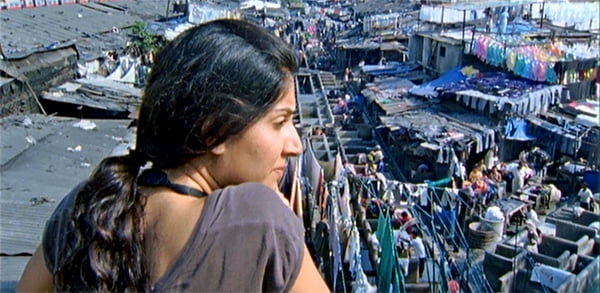
Shai’s idea of capturing candid pictures of the lowered working class is controversial given how distanced she can be. Her infatuation with Arun becomes a constant reminder of the class and privilege that she belongs to; that she would rather choose Arun over Munna (which she inevitably does) majorly due to the class difference.
Shai and Munna are captured from a rather relaxed and free camera space and the physical distance between them signifies the societal gap. His cramped-up hut against her rather spacious house is a significant contrast. Dhobi Ghat itself feels like a documentary, with non-Indian soundtracks (that work fabulously) with no songs and Bollywood hyper-exaggeration.
Perhaps the largest contributor to the visual storytelling aspect of the film is Yasmin’s character. Kriti Malhotra embodies a shadowed Muslim woman who yearns to spring into the light. Her scenes are clumsy, given her naivety, they are claustrophobic and random (her burkha scenes in public), speaking about her scattered life that eventually falls apart. Her enthusiasm and winsomeness instantly make her a fan-favourite and her charm is real (We don’t blame you, Arun).
Yasmin celebrates her birthday alone, she still loves her brother despite the alienation, she learns and she grows, she is unpolluted and fresh. Through her “rookie in town” approach, not only is the City personified, but the setting becomes far more relevant. She contextualises the film itself, not with just her affect-filled narration but also the wonderful shots (though amateur, are heart-wrenching) that capture Mumbai and the people she has access to. All of her is expressed through tapes, her entire arc rests behind a screen except for when Arun discovers what she did; the only tangible connection between them.
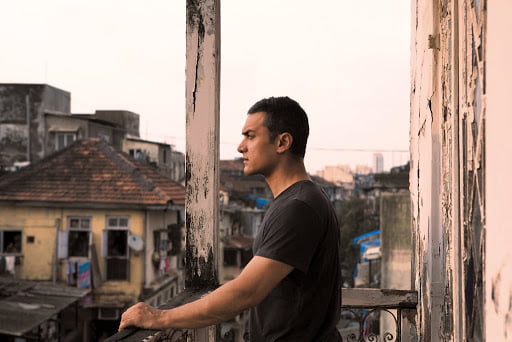
Yasmin does desire to put herself out in the world, perhaps not as much as her underprivileged counterpart, Munna, but she surely is recording her ode. As is Shai and so is Arun. Yasmin could’ve easily stopped after two recordings, knowing that they might never reach her brother, but she chose to draw validation by self-talk, and up to a point she did succeed; she did prolong the contingency of her suicide.
The videotapes and the very fact – that she knew that her face, her voice, her being, which meant nothing to her husband or the City, shall perhaps exist sturdily for some time after she passes – granted her life some incremental meaning. She filmed her own story within the film; an incredible cinematographic stunt that was pulled impeccably.
The gender gaze switch
Munna and Shai are both incredibly mellow characters. Their slow-burn romance and growing screen time create a sense of time progression in the film. They can be considered as “above average,” representations of stereotypical masculinity and femininity respectively. And that is what allows the idea of a reversed gendered gaze to sprout.

Though gender was never explicitly tackled in Dhobi Ghat, I can’t help but notice how masculinity (Munna) becomes the object of desire and femininity (Shai), bears the responsibility to give it justice. Usually, the winds blow in the opposite direction in Bollywood. The hero clicks multiple pictures of the heroine in a zillion different poses, outfits and locations. She pouts, she dances, she fashions herself and he dotes on her.
Apart from Alia in Dear Zindagi, perhaps there is no significant female character who plays a cinematographer and photographer, which comes with a very heavy masculine connotation. Playing the guitar in college is another gendered trope that Shraddha’s character in half-girlfriend so beautifully feminises.
In Dhobi Ghat, Shai is allowed to enter into the more dominant space of the creative artist (at the request, not command of the man) and Munna plays the muse, traditionally considered and contemporarily somewhat unhinged, to be a feminine attribute.
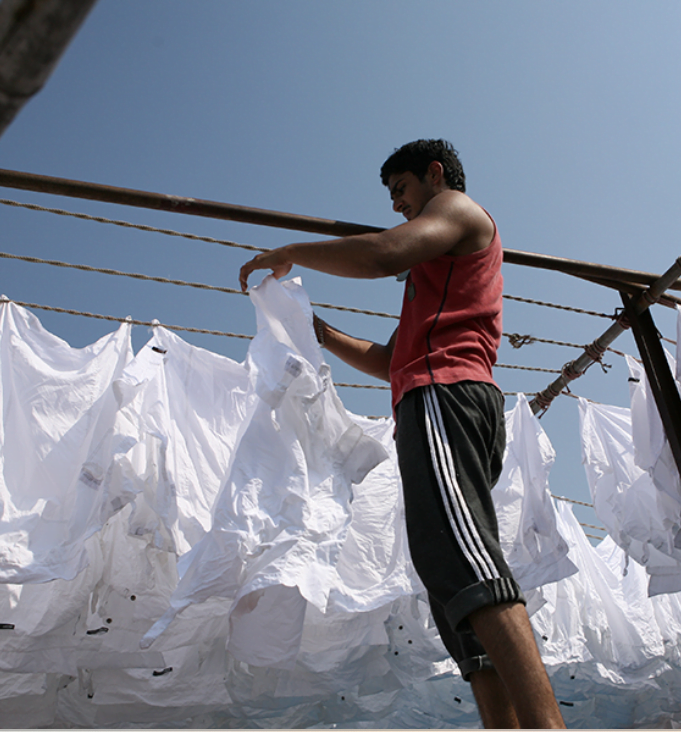
Do we see a woman clicking pictures of men, or male models the way you have male photographers obsessively prying over female models? (On the Bollywood screen?) Rather rare. It’s always the men who are expected to cherish and capture the “feminine beauty” of the woman and then fall in love with her, not quite the other way around. But this film, at least halfway through the arcs of Muni and Shai, does manage to incorporate a trope-breaking sequence of events.
The male body is objectified and even slightly sexualised when Munna offers to take his shirt off and Shai doesn’t protest. Munna is shown to blush, shy away at times, and grow conscious of his dream and physicality, something that men do go through yet is always pruned out of mainstream cinema because it’s not “macho” enough.
Eventually, we return to the classic “poor guy falls for a rich girl above his league,” trope. Perhaps if both Munna and Shai belonged to relatively closer social circles, then the reversed gender gaze might have worked. The way gender works in different social settings is put to the test here. Munna has to assume a “masculine” role more than Arun does perhaps because of the more traditional and non-liberal environment he is living in.
Despite that, these obvious divergences in Munna and Shai’s lifestyles, their friend circles, their perceptions of romance, masculinity, and femininity, and their dreams and backgrounds for some ephemeral time do not become an obstacle in their “love story.”
Mumbai, a city of acceptance and congruence allows the intersectionality of region, economy, and gender to flourish; but only up to a point, beyond which the chemistry is no longer unique. But it’s not a rule that fully “thrashing a trope” leads to a galvanising romance, sometimes fifty-fifty works too (trope-making and trope-breaking)
Fading identities and the class divide in Dhobi Ghat
Perhaps the most striking scene of the Dhobi Ghat is a montage shot from Yasmin’s tapes. She writes her name in Urdu on the wet sand of the beach and the waves wash her writings away. She rewrites her name and yet again the water restores the sand into its former space. Her name vanishes and fades into oblivion, just like she would have in the mayhem and grandiosity of Mumbai, had Arun not stumbled across her videotapes. The beach scene is the standout moment for me. The beauty of Mumbai seashores — tick, good dialogue delivery — tick — plot layering using metaphor — tick, not too long or short of a shot — tick. Yasmin’s existence beyond death is solely credited to her tapes.

Digital Media as a technological innovation gives humans the capability to immortalise themselves to a certain degree. Thanks to Arun’s random, perverse moods and ideas, he becomes deeply in the life of a “nobody.” A well-off painter starts making a muse out of an unknown middle-class Muslim woman whom he hasn’t even seen –a peculiar and unprecedented phenomenon, something so odd that it could only happen in Mumbai –the garden where all sorts of flowers grow.
Yasmin’s identity, which is embroidered with no status, worthy relations, wealth, public acknowledgement, or beauty becomes irrelevant in the mayhem of the city. She has nobody, she has no legacy, she is a drop in the ocean. On the contrary, Arun enjoys the luxury of being famous and publicly known. Had he been a commoner seeing her tapes, perhaps her irrelevance also would have been irrelevant to him.
Here, the socio-economic vacuum is what draws Arun to Yasmin like air gushes into an empty pit of nothingness. He has contacts and privileges and despite all he has he is disconsolate and incomplete. If we compare Yasmin and Arun as co-habitants of the City, Arun, and Yasmin have a complex and twisted connection, one which Arun takes a lot away from.
The tapes falling into Arun’s hands are sheer destiny, and destiny sometimes has beautifully heartbreaking tricks up its sleeve. When Arun connects the dots and Yasmin’s timeline becomes clear, he breaks down knowing that there is nothing he can do to undo the past. Arun surely has problems, but how large and dense are his problems compared to those of Yasmin? Is his disconsolation even significant in the large shadow of pain that deserted lower-middle-class women’s death casts?
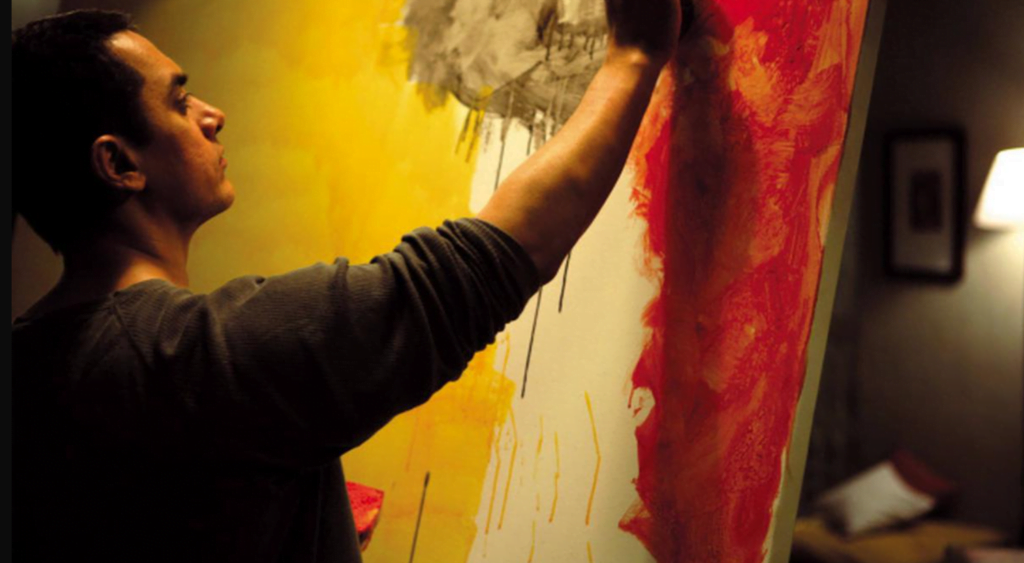
What adds to the grief, I suppose, is the class divide subconsciously pinches Arun and somewhere makes him feel guilty. He enjoyed her naivety, he enjoyed her honesty and the thoughtless leisure that came with the simplicity of her life, something that he was deficient in. Shai was looking for a similar sort of comfort which she leached out of Munna, yet perhaps not as profoundly and sensitively as Arun did from Yasmin.
When Arun finishes the last tape and eventually reaches the bridge of reality, he finds it hard to cross considering the tragedy of the “marginalised woman.” Had she perhaps been a more elite and recognisable figure, her death would have meant something more to the outside world and something less to Arun. The silence of the old neighbour is also perhaps a symbol of the trauma and suppression of the lowered class. Her mute attitude may maybe a sign of the lack of agency and identity that she possesses.
While Arun openly cries and expresses the pain that Yasmin’s death brings to him, the old woman simply remains still and silent as always, as if she has bore witness to the deaths of multiple such Yasmin, who mean nothing, just like herself. Yasmin too, is never explicitly crying or complaining to her brother in her tapes despite having suicidal tendencies. The lack of freedom of expression of the underprivileged chunk of society speaks loud and clear towards the end.
A final note on Dhobi Ghat
It’s worth watching, especially if you find yourself caught in the rat race of the city which physically and emotionally exhausts you. If you feel like one of those turtles with a shell lesion or a pigeon hanging upside down on an electricity pole choking on plastic, perhaps the subtle emotional suffocation might resonate with you –regardless of who you are, as long as you have lived in the city.
After all Dhobi Ghat ends on the note of sacrifice and the rigid yet constant flow of life. Munna sacrifices his love for Shai’s needs, which is ironic considering their social dynamic and he returns to his struggles. Arun ends up as miserable as he was, to begin with. Shai also reaches nowhere, unable to understand that Arun is a cold trail. Yasmin is the only one with a shifting arc, nevertheless, her end is grim as well. And yet life goes on! Or maybe there is a change. Who knows?
